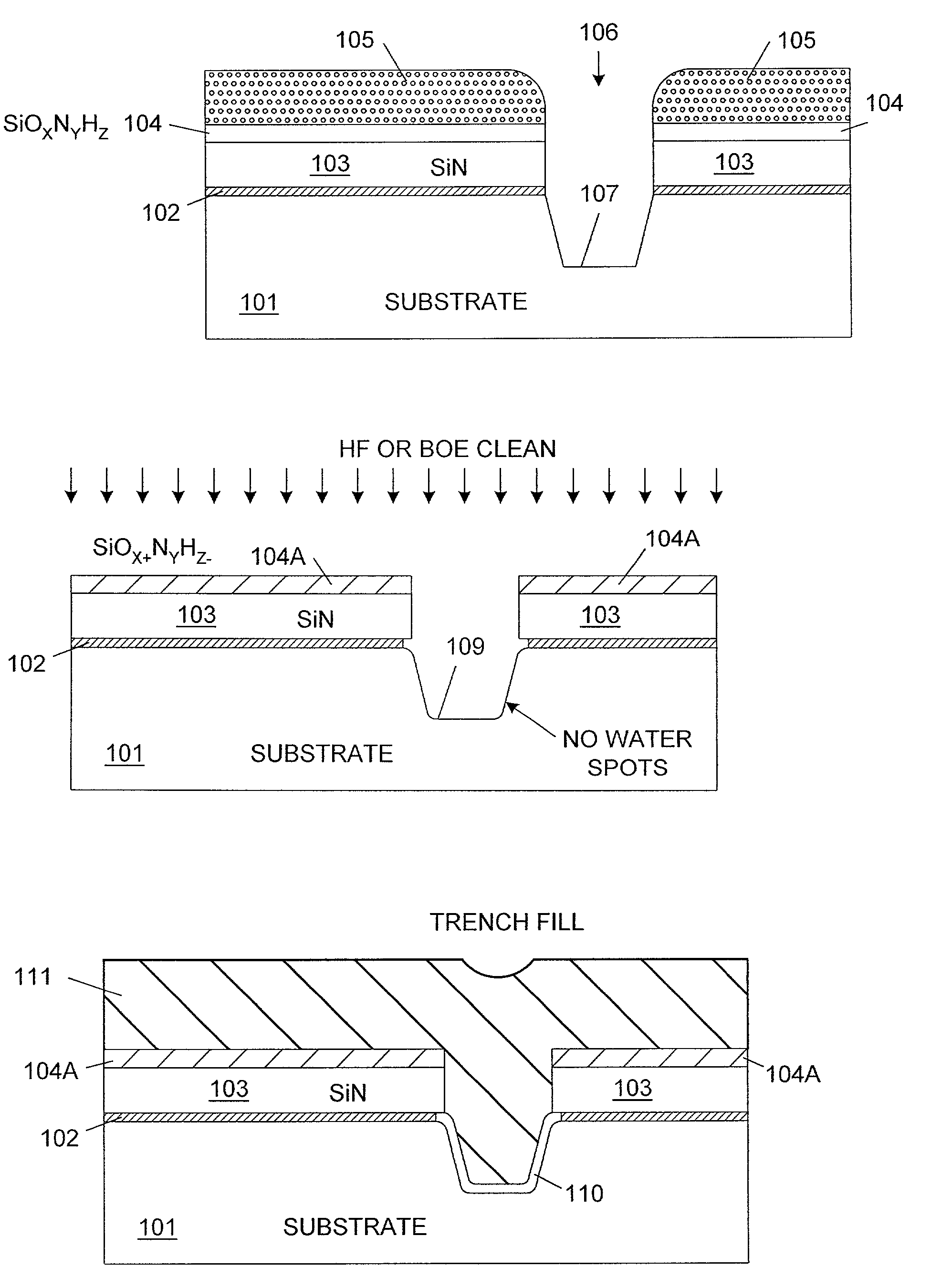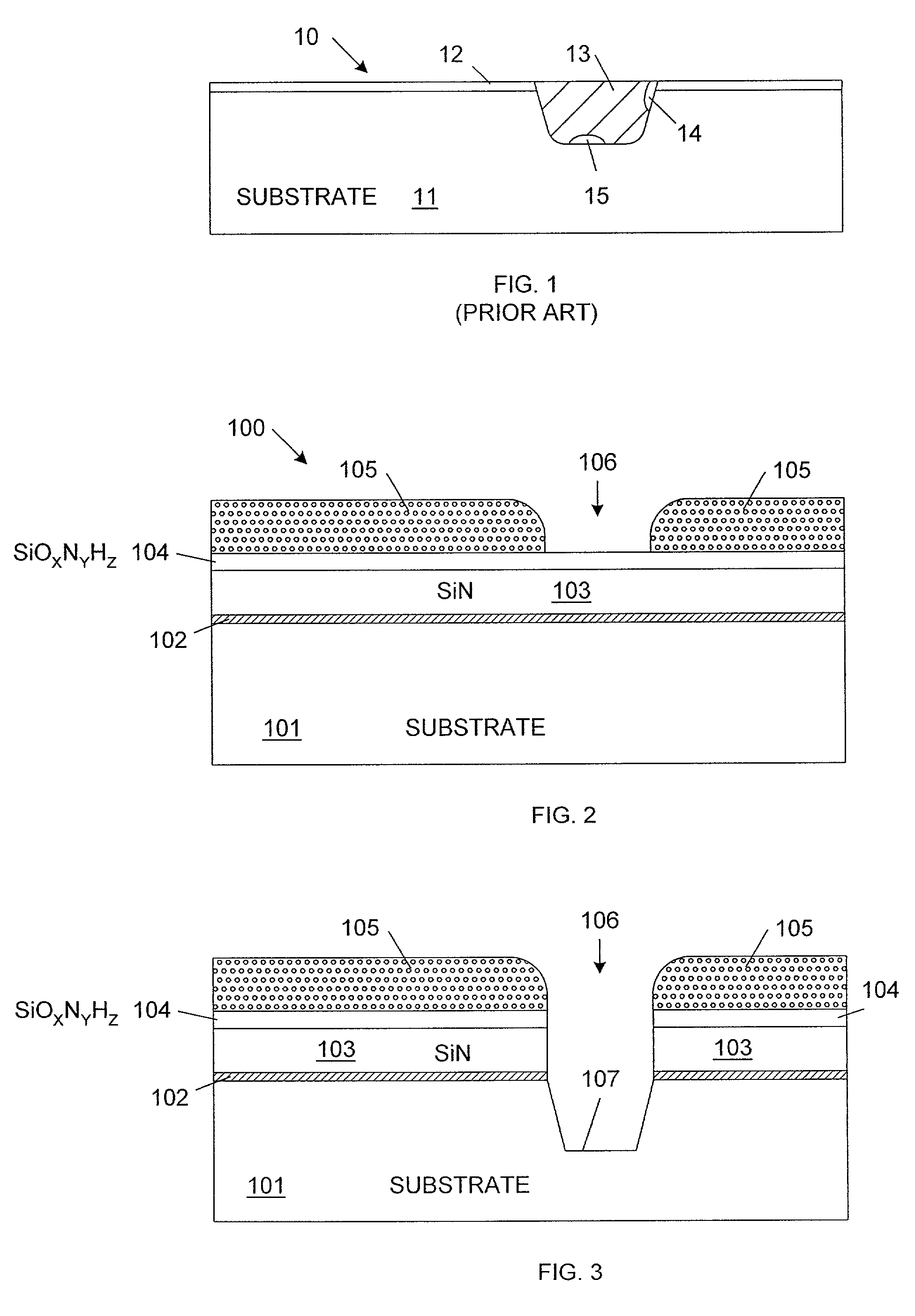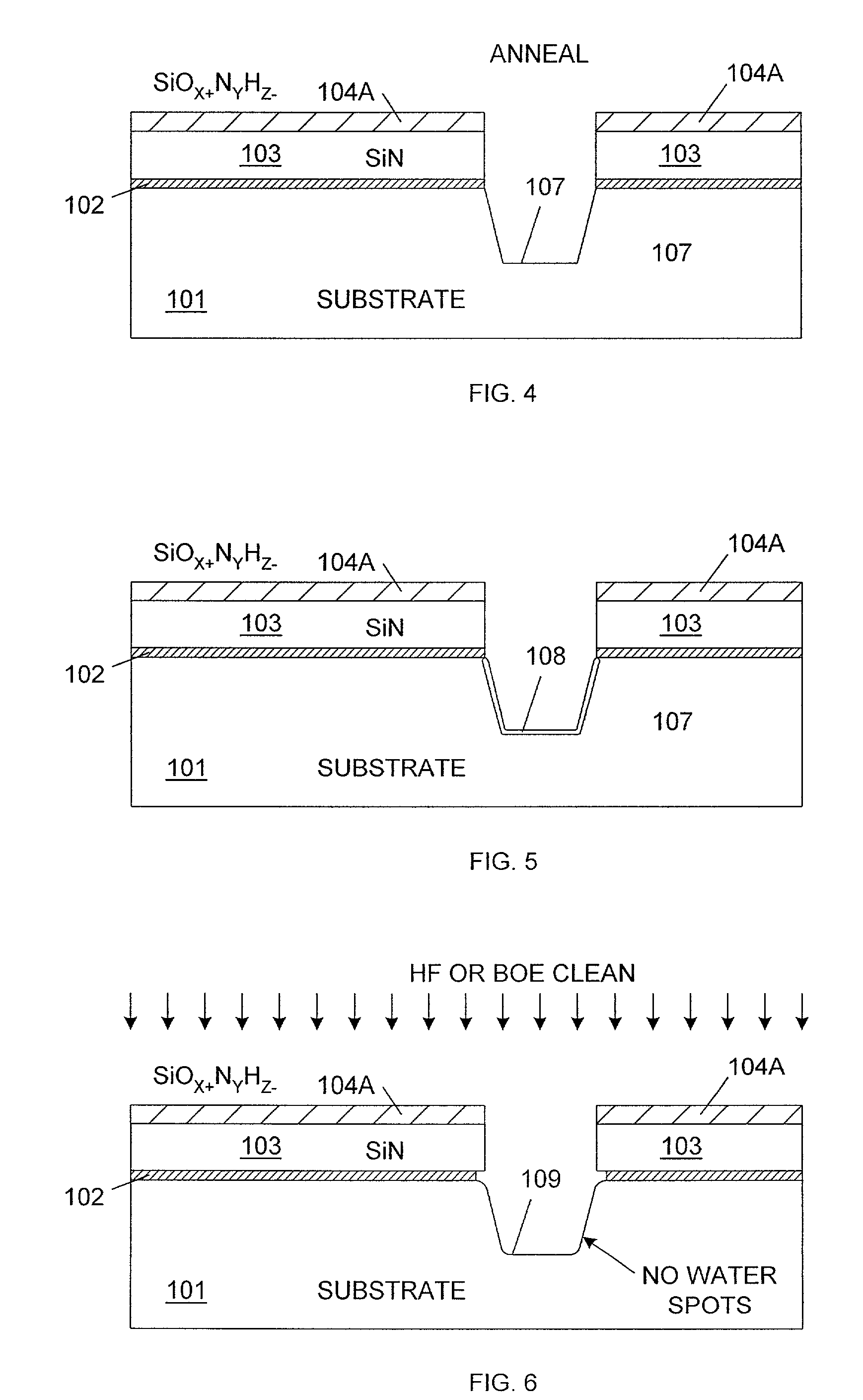Dielectric anti-reflective coating surface treatment to prevent defect generation in associated wet clean
- Summary
- Abstract
- Description
- Claims
- Application Information
AI Technical Summary
Benefits of technology
Problems solved by technology
Method used
Image
Examples
Embodiment Construction
[0015]FIGS. 2–9 are cross-sectional diagrams of a semiconductor process for preventing the formation of watermark defects in accordance with one embodiment of the present invention.
[0016]As illustrated in FIG. 2, semiconductor structure 100 includes semiconductor substrate 101, pad oxide 102, silicon nitride layer 103, silicon oxynitride layer 104 and photoresist mask 105. In the described embodiment, semiconductor substrate 101 is a lightly doped monocrystalline silicon substrate having a crystal structure of . However, other semiconductor substrates can be used in other embodiments of the invention.
[0017]In the described embodiment, pad oxide 102 is a layer of silicon oxide that is thermally grown at the upper surface of substrate 101 to a thickness in the range of about 80 to 150 Angstroms. Pad oxide 102 is grown using processing techniques that are well known to those of ordinary skill in the art.
[0018]Silicon nitride (SiN) layer 103 is then deposited over pad oxide 102 to a thi...
PUM
 Login to View More
Login to View More Abstract
Description
Claims
Application Information
 Login to View More
Login to View More - R&D
- Intellectual Property
- Life Sciences
- Materials
- Tech Scout
- Unparalleled Data Quality
- Higher Quality Content
- 60% Fewer Hallucinations
Browse by: Latest US Patents, China's latest patents, Technical Efficacy Thesaurus, Application Domain, Technology Topic, Popular Technical Reports.
© 2025 PatSnap. All rights reserved.Legal|Privacy policy|Modern Slavery Act Transparency Statement|Sitemap|About US| Contact US: help@patsnap.com



